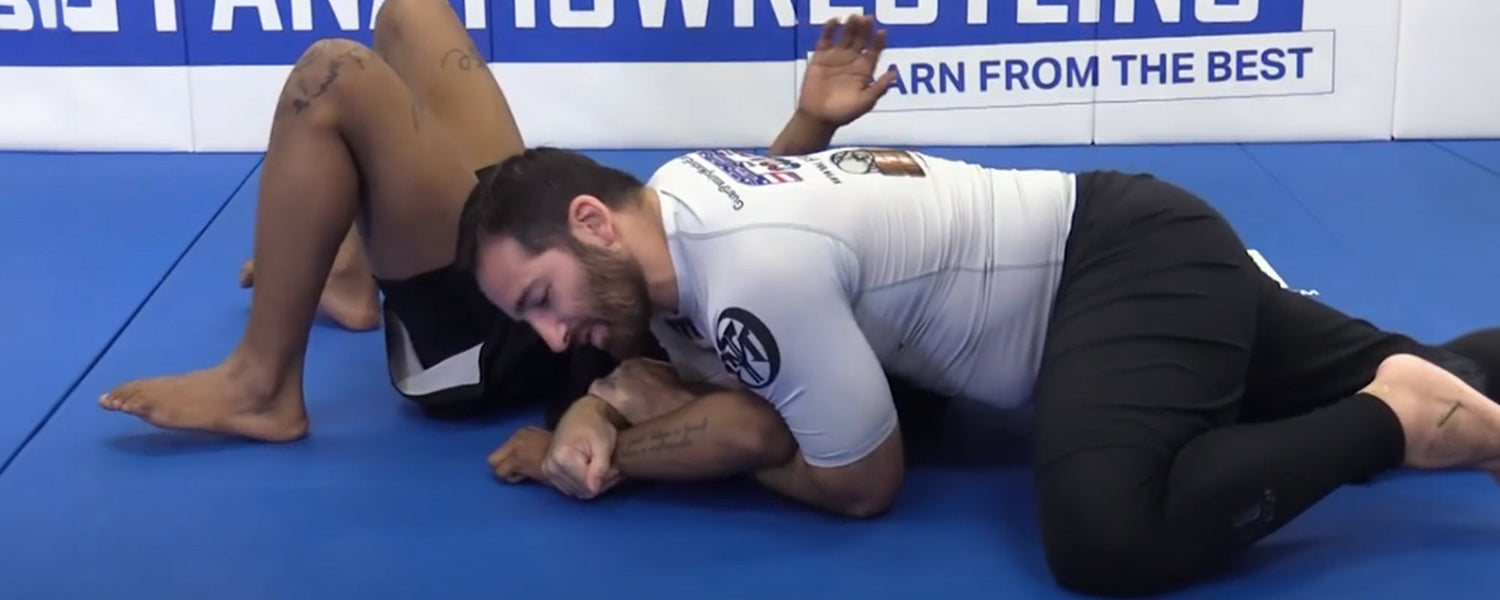Table of content
1. Introduction
Every submission method comes with its variation that provides the maximum opportunities to submit fellow fighters. The submission method of kimura is a versatile move that has gained the ultimate popularity. That has been originated in the martial arts of judo.
The submission techniques are used in jiu-jitsu to force the opponent to leave the game by tapping. For that purpose, the fighters are required to exert force on the opponent by using different methods of submission. These submission methods are applied on the joints of the arms and legs, the choking submission method is also used to tap the opponent.
The sport of the Brazilian jiu-jitsu is the dynamic art of grappling that has intense joint locks. The grappling methods of BJJ went on to evolve with the passage of time. The submission methods are taken from the different martial arts and became part of jiu-jitsu.
In this way, the fighters of the MMA used to apply the submission methods that could give the highest percentage. From the single joint lock, the methods to submit the opponent enhanced the techniques and methodologies of the BJJ athletes that are taken by practitioners around the globe.
The kimura grips are used by the BJJ fighters to get powerful control over the opponent. It is the joint lock that is applied to the arms that have the tendency to break the arm of the opponent. It is the ultimate submission method that is used by fighters in mixed martial arts and in the Ultimate Fighting Championship.
2. What is the Kimura Lock?
Kimura Lock is the submission method that is used in Brazilian martial arts, it is a joint lock of the arm that can be applied on the joints of the elbow and shoulder.
The are three joints in the arm forearm, the elbow joint, and the upper shoulder joint. With these joints, the muscles are connected and the blood circulation continues. The joints of the body are the fragile components that a slight pressure can even break the bone.
It is the submission method that isolates the joints of the shoulders and the elbows with the ultimate grip or hold. The massive fighter exerts the pressure until the fellow grappler goes for a tap. If the duration of the kimura lock is increased it can lead to the breakage of the bone.
The Kimura lock comes with different various that create multiple opportunities for the fighters to apply the submission method.
Kimura lock is known as the double wrist lock that resists the movement of the wrist by blocking the joints of the arm. It is also famous with the name of yaku ude-gourami.
3. The Origin of Kimura Lock
This submission method is known as the Kimura lock because it was developed by the Japanese Judo fighter Masahiko Kimura. This popular submission method has been used by fighters for hundreds of years.
The origin and adoption of Kimura lock in the martial arts of jiu-jitsu has taken place with the encounter of one judoka fighter with the founders of the jiu-jitsu.
In the previous century, a Brazilian jiu-jitsu match was held between the two versatile fighters, Masahiko Kimura and Helio Gracie.
The originator of dynamic sports has shown grappling skills that also include the joint locks to submit the opponent. Masahiko Kimura who is also a professional wrestler came across the dynamic move of the joint lock. The grappling match became more interesting as the Kimura initiated the submission method of elbow or shoulder lock that made the opponent tap out.
The ancient jiu-jitsu match ended with the broken arm of Helio Gracie, as he was not aware of the new joint-locking method. Gracie was unable to resist the force that was exerted on the arm the match ended as the towel was thrown in front of them, which shows the defeat of Helio Gracie.
The execution of the new submission method became part of Brazilian Joi-jitsu. This submission method was named after Masahiko Kimura and is popular with the name of Kimura lock.
Kimura lock has been part of the martial arts of Judo, where it was named yaku ude-gourami. This submission method is also part of catch wrestling, the fighter
4. Mechanism of Kimura Lock
The joint lock of the kimura works on the principle of leverage, the BJJ grappler puts pressure on the elbow or shoulder joints. The exertion of immense pressure can lead to the breakage of the joint bone, which can have a worse impact on the professional life of the BJJ fighter.
Kimura lock can be applied from multiple positions which increases the chances of effectiveness. It is the submission method that is used in jiu-jitsu, with the use of the arms lock. This double-joint lock isolates the shoulder and arm joints.
This is acquired as the fighter holds the wrist of the opponent from the same side. In the next step, the fighter grabs the shoulder and joins the hook with his own wrist. In this way, the shoulders and the elbow joints are isolated, with the figure four pressure on the wrist.
At first, the pressure is created on the elbow, and later the force is moved toward the shoulders, creating immense pressure on the targeted area. Now the opponent has only two options the first one is to tap for submit and the second is to have a broken arm.
5. Execution of Kimura Lock from The Same Side
The side kimura technique is considered to be the most powerful submission method. In jiu-jitsu, the correct placement of the body is crucial, as it will help to execute the submission method.
In the side kimura, the pressure is created on the torso, in addition to it more pressure is exerted with the ribs and hips over the shoulder of the opponent. But at the same time, it is a difficult position to acquire. The grips and the control are the same as the basic Kimura lock, the change is in taking control of the same side.
5.1. Side Mount Position
The fighter approaches the opponent from the side mount position. By placing the weight on the torso of the opponent and isolating the head at the top.
The fighter needs to target the upper arm area of the opponent. Try to keep the hands of the opponent on the mat, this will help to execute the kimura lock.
5.2. Gripping method
As you have taken the position of the side mount, restrict the movement of the opponent by keeping the extended arm over him.
One hand is placed on the wrist of the opponent, the other hand is moved under the bicep, and with the hand, the fighter needs to grip the upper part of the hand.
5.3. Figure Four Lock
All you have to do is to reach under the tricep of the opponent and reach to your arm which has restricted the movement of the fellow fighter.
Place the hand on your own wrist, with your four fingers, this is also known as the figure four grip.
Basically, this is the legendary move that is part of professional wrestling. But in jiu-jitsu, their method and application are comparatively different.
5.4. Taking the Control of the Arm
After the above-described method, the grappler needs to get the proper control over the arm by creating the L shape of the elbow. And moving it in an upward direction.
5.5. Changing the Position For the Finish
The last step is to change the direction by moving to the same side, where you have targeted the arms of the opponent.
The change in direction will prevent the escape of the opponent. In addition, it will allow the fighter to submit to the opponent easily. Secure your position by placing your foot at the right angle. At last, you are required to exert the pressure of the chest, ribs, and hips on the shoulder of the opponent after maintaining the grip of the hands.
This angle of pressure application will allow you to submit the opponent easily, because from this position the fellow fighter can not apply any technique.
6. FAQs
6.1. How can you pin the opponent from Kimura Lock?
The submission method of the kimura lock is the ultimate move that can restrict the movement of the opponent at once. It offers multiple variations that increase the execution of the submission method. It is the joint lock that works on the rules of the leverage,
The BJJ grappler applies pressure after locking the joint that creates the unbearable force, the opponent pins at the place and wants to get out of the immense pressure. In this way, this highly effective mechanism can make the opponent tap.
6.2. What makes Kimura different from the various submission methods?
Most of the submission methods work on the joint and hook mechanism. The kimura method is different from the other submission methods because it is a double-joint arm lock. The kimura submission method isolates two joints at the same time. The shoulder and the elbow cannot hold the pressure and the opponent taps to submit.
6.3. Why is Kimura Lock considered to be the most devastating method?
Kimura lock is a double joint lock it is the submission method that is incredibly uncomfortable. This submission method targets the arm and puts pressure on the shoulder and elbow joints creating unbearable pressure that can even break the bone of the arm.
6.4 What are the other names of the Kimura Lock?
This locking submission method has originated in the past few centuries, it has been part of multiple martial arts that also include Judo, Catch Wrestling, Jiu-Jitsu, and Mixed Martial Arts.
In different martial arts, it is named differently. Its various names are reverse Ude Garami, gyaku ude-garami. As the fighter holds the wrist of the opponent and maintains the pressure by gripping the wrist it is known as a double wrist lock and in free wrestling it is known as the chicken wing.
7. Last Words
The art of Brazilian jiu-jitsu is dynamic, that has versatile submission techniques to put down the opponent. Every submission method has its variations that allow multiple opportunities for BJJ grapplers.
The Kimura lock submission method targets the arms that have their roots embedded deep into the various martial arts. It also comes in a variety of same-side control kimura locks. This variation makes the BJJ grappler stand out and not let the opponent escape.
Moreover, it is the most challenging submission method that gives less chances for the escape. Same side kimura lock is also known as the most destructing variation that puts tremendous pressure on the joints of the elbow and shoulders and can lead to the breakage of the bones.









Leave a comment
This site is protected by hCaptcha and the hCaptcha Privacy Policy and Terms of Service apply.